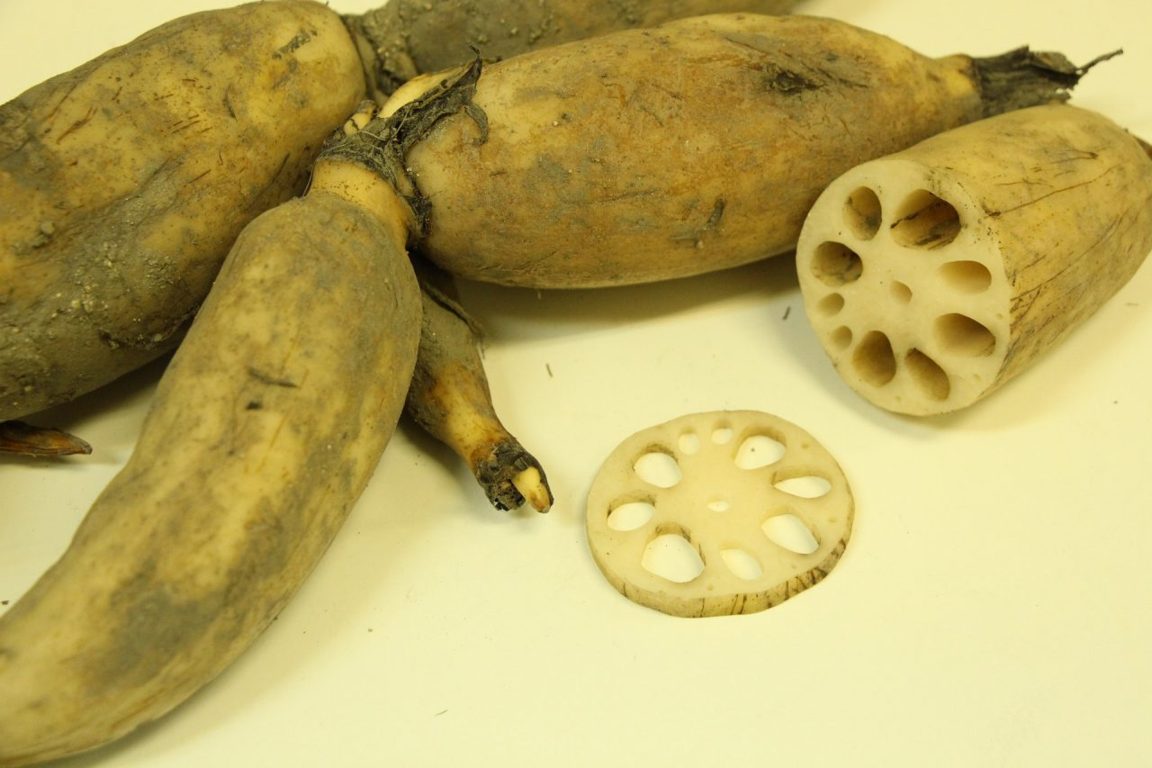
Lotus stems are actually the rhizomes (roots) of the lotus plant. Their use for culinary purposes has been dated at least 5000 years ago in China and is commonly used in Japan, India and other parts of Asia.
Lotus stem is generally round and white to light green in colour and contains hollow air cubicles that run on the length of the stem. The appearance of this root resembles that of a stem and hence it is popularly referred to as Lotus Stem.
The lotus stem is comparable to raw potato in the crunchy texture, however along with carbohydrates, it also provides a good amount of fibre, which is unusual of a root veggie. It is packed with a battery of important nutrients like potassium, vitamin C, B complex vitamins and iron.
Health benefits:
- It is specifically researched and proven that Lotus stem provides tryptophan, an amino acid that influences antioxidant activity thus accelerating the detoxification process.
- It is an outstanding source of potassium, which makes it a popular super veggie, friendly to the heart and cohesive in the treatment of hypertension.
- It improves gut health and aids effective digestion.
- It helps treat water retention, thus combats premenstrual bloating.
- It ensures a satiated feeling and helps weight watchers deal with hunger pangs and achieve weight goals.
- The high iron content helps in improving hemoglobin and also boosts immunity.
Lotus stem should be washed thoroughly to avoid any parasite infection, peeled and sliced diagonally into cross-sections. They can be sprinkled with lime juice to avoid discolouration.
Lotus stem can be simply steamed, stir-fried or cooked to make a savoury accompaniment. Whatever the style of cooking it not only adds crunch and variety to your salads, pickles, veggies, stir-fries, side dishes, soups but also improves the score of essential nutrients in your daily diet.
So what are you waiting for? Get back to your health roots and boost the Nutrient Density of your meals with this super root!



